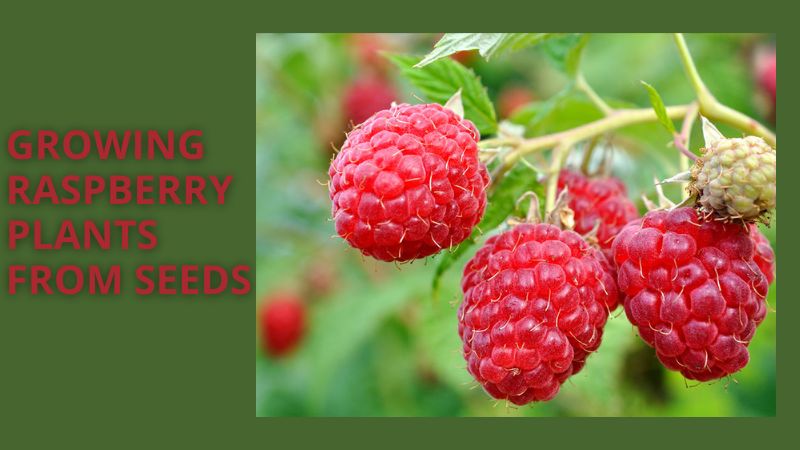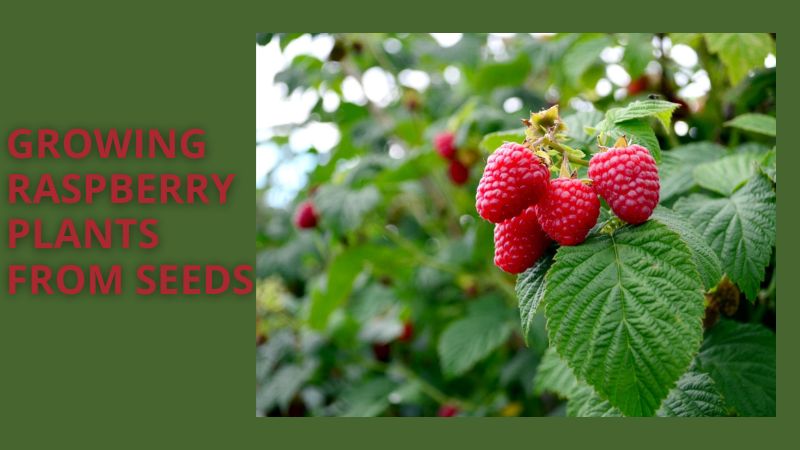PLANT TREE
A Beginner’s Guide to Growing Raspberry Plants from Seeds
Raspberries are a delicious and nutritious fruit that can be a rewarding addition to any garden. While most gardeners choose to plant raspberries using canes or cuttings, growing raspberry plants from seeds is an exciting and cost-effective way to cultivate your own raspberry bushes. However, growing raspberries from seeds requires patience and some basic gardening knowledge. Floral Garden Ideas will walk you through the steps of planting, nurturing, and eventually harvesting your own raspberry plants from seeds.
Understanding Raspberry Varieties
Before you begin growing raspberries from seeds, it’s essential to understand the different types of raspberry plants. There are two main categories:
- Summer-Bearing Raspberries: These raspberries produce a single crop of fruit during the summer, usually in June or July. They grow on canes that were formed the previous year.
- Ever-Bearing (or Fall-Bearing) Raspberries: These varieties produce two crops of fruit—one in late summer or early fall on the tips of the current year’s canes and another, smaller crop in the following early summer.
Within these categories, there are also red, black, yellow, and purple raspberry varieties. Red raspberries are the most common, but all varieties can be grown from seeds, provided you start with high-quality seeds from a reputable source.
Growing Raspberry Plants from Seeds
Growing raspberries from seeds is a longer process compared to planting canes or cuttings, but it can be highly rewarding.
- Raspberry Seeds: Purchase seeds from a reputable supplier, or you can collect seeds from fresh raspberries. If you choose to collect seeds, make sure the fruit is ripe and healthy.
- Seed Starting Mix: A good-quality seed starting mix is essential for germinating raspberry seeds.
- Seed Trays or Small Pots: Use seed trays or small pots to start your seeds indoors.
- Plastic Wrap or a Propagation Dome: To maintain moisture and warmth, you’ll need to cover your seed trays or pots with plastic wrap or a propagation dome.
- Grow Lights or a Sunny Window: Raspberry seeds need plenty of light to germinate and grow.
Stratifying Raspberry Seeds
Raspberry seeds require a cold period, known as stratification, to break their dormancy and germinate successfully. This mimics the natural winter conditions they experience in the wild.
- Prepare the Seeds: If collecting seeds from raspberries, thoroughly clean them by rinsing off any fruit pulp. Allow them to dry completely before starting the stratification process.
- Stratification: Place the cleaned seeds in a small plastic bag filled with moist seed-starting mix, sand, or peat moss. Ensure the medium is damp but not overly wet. Seal the bag and refrigerate it for 60 to 90 days.
- Checking for Germination: After the stratification period, inspect the seeds for signs of sprouting. If any seeds have begun to germinate, they are ready to be planted in seed trays or pots filled with a well-draining seed starting mix.
Planting Raspberry Seeds
Once the stratification process is complete, it’s time to plant the raspberry seeds.
- Preparing the Seed Trays: Fill your seed trays or small pots with seed starting mix, leaving about 1/4 inch from the top. Lightly moisten the soil with water.
- Sowing the Seeds: Scatter the raspberry seeds evenly over the surface of the soil. Raspberry seeds are tiny, so take care not to sow them too densely. Lightly press the seeds into the soil using your fingers or a small piece of cardboard.
- Covering the Seeds: Sprinkle a thin layer of the seed starting to mix over the seeds, covering them lightly. Raspberry seeds need light to germinate, so do not bury them too deeply.
- Maintaining Moisture and Warmth: Cover the seed trays or pots with plastic wrap or a propagation dome to retain moisture. Place the trays in a warm location, ideally between 70°F and 75°F (21°C to 24°C).
- Lighting: Place the trays in a bright location where they can receive indirect sunlight, or use grow lights to provide 12-16 hours of light per day. Raspberry seeds need light to germinate, so ensure they are well-lit.
- Germination: Raspberry seeds can take anywhere from 2 to 8 weeks to germinate, so patience is key. During this time, keep the soil moist and check daily for signs of sprouting.
Transplanting Raspberry Seedlings
Once raspberry seedlings have developed several true leaves and appear sturdy, they’re ready for transplanting. Before moving them outdoors, harden off the seedlings by gradually exposing them to outdoor conditions over a week or two.
Choose a suitable planting site with well-drained, loamy soil and a pH of 5.5 to 6.5. Full sun is ideal, but partial shade is tolerated.
When transplanting, dig holes slightly larger than the root ball, spacing plants 2-3 feet apart with rows 6-8 feet apart. Carefully remove seedlings from pots and place them in the holes, ensuring the crown is at the soil level. Backfill with soil, water thoroughly, and apply a layer of organic mulch to retain moisture, suppress weeds, and regulate soil temperature.
Caring for Raspberry Plants

Growing raspberries from seeds requires ongoing care to ensure healthy growth and fruit production. Here’s how to care for your young raspberry plants:
- Watering: Raspberries need consistent moisture, especially during dry periods. Water the plants deeply at least once a week, more often in hot or dry weather.
- Fertilizing: Once the plants are established, feed them with a balanced, organic fertilizer in early spring and again in mid-summer. Be careful not to over-fertilize, as too much nitrogen can lead to excessive leaf growth at the expense of fruit production.
- Pruning: Pruning is essential for maintaining healthy raspberry plants and maximizing fruit production. For summer-bearing varieties, prune the canes that have produced fruit down to the ground after harvest. For ever-bearing varieties, prune the canes that have fruited in the fall, and leave the new canes to produce fruit the following season.
- Pest and Disease Control: Keep an eye out for common raspberry pests, such as aphids, raspberry beetles, and spider mites. Use organic pest control methods like insecticidal soap or neem oil to manage infestations effectively. Also, be vigilant for signs of diseases like powdery mildew or cane blight, and remove any affected plant parts promptly.
- Training and Support: Raspberry canes can grow quite tall and may need support to prevent them from sprawling on the ground. Use stakes, trellises, or wire supports to train the canes upright, which also improves air circulation and makes harvesting easier.
Harvesting Raspberries
One of the most rewarding aspects of growing raspberries is the harvest. Depending on the variety and growing conditions, you can expect to harvest your first crop of raspberries 1 to 2 years after planting the seeds.
- Harvest Time: Raspberries are ready to be harvested when they are fully colored and easily detach from the receptacle. Summer-bearing varieties will produce fruit in mid to late summer, while ever-bearing varieties may produce two crops—one in early summer and another in the fall.
- Harvesting Method: Gently grasp the ripe berries and pull them from the cane. Raspberries are delicate, so handle them with care to avoid bruising. Pick every few days to ensure you harvest the fruit at its peak ripeness.
- Post-Harvest Care: Raspberries are highly perishable, so refrigerate them as soon as possible after harvesting. They can be stored in the refrigerator for a few days, or frozen for longer-term storage.
Final Thoughts
Growing raspberry plants from seeds is a fulfilling project that requires patience, but the rewards are well worth the effort. By understanding the process of stratifying seeds, planting, transplanting, and caring for the young plants, you can successfully cultivate your own raspberry bushes. With proper care and attention, your raspberry plants will thrive and produce delicious, juicy berries for years to come, providing a fresh, homegrown treat that you and your family can enjoy. Whether you’re a seasoned gardener or a beginner, this guide offers the essential steps to start your journey of growing raspberries from seeds.


